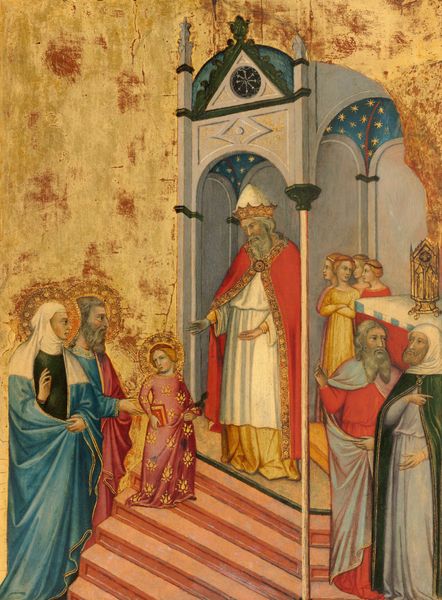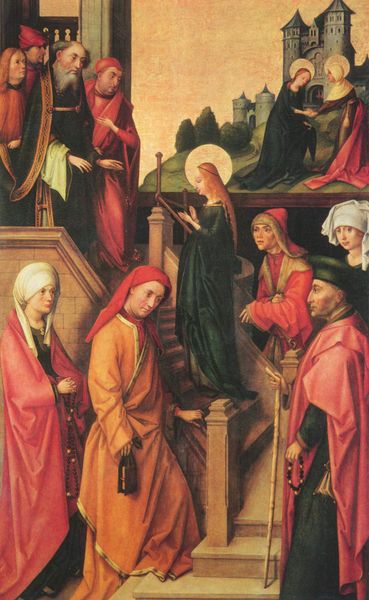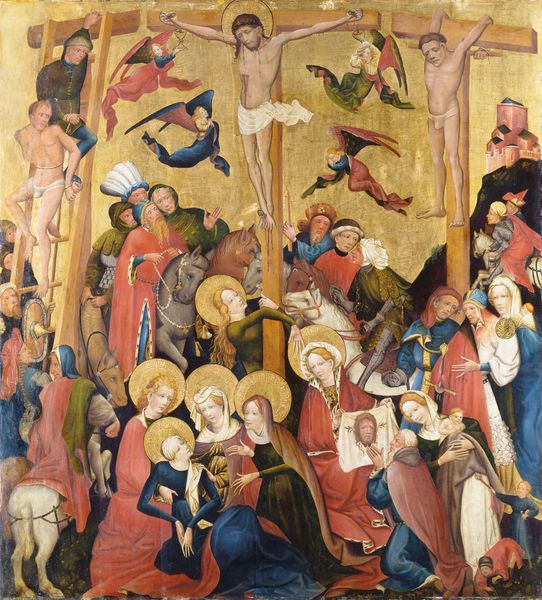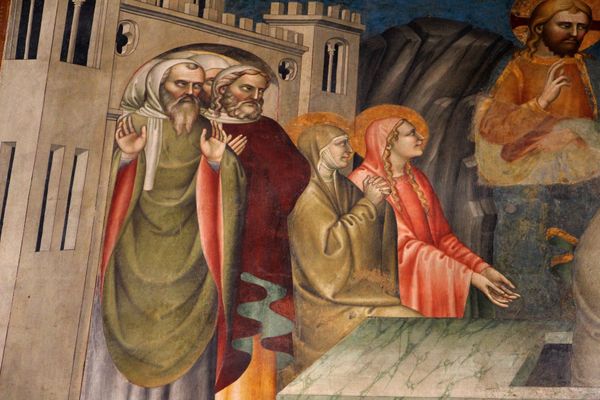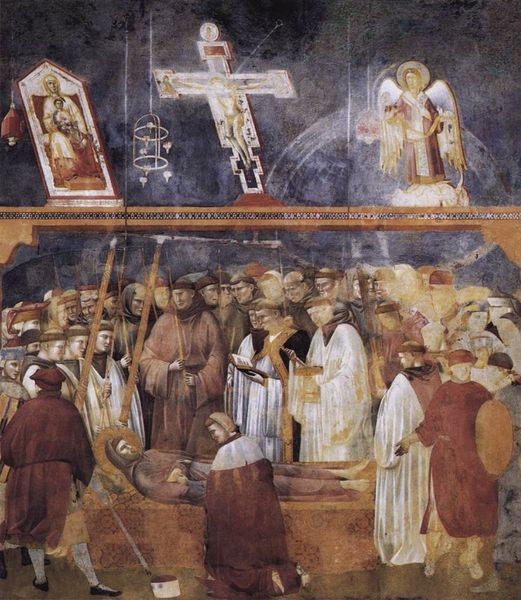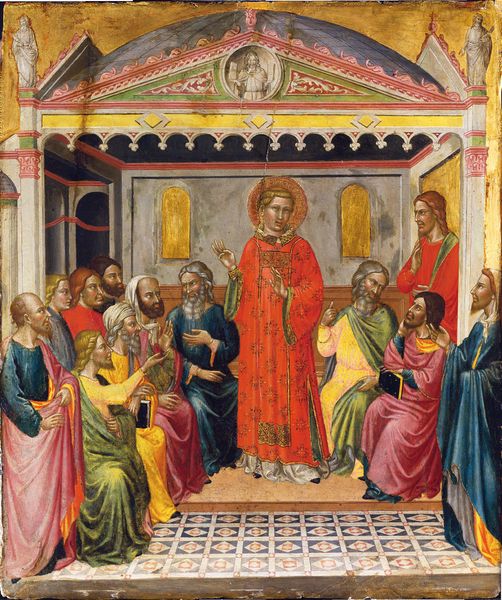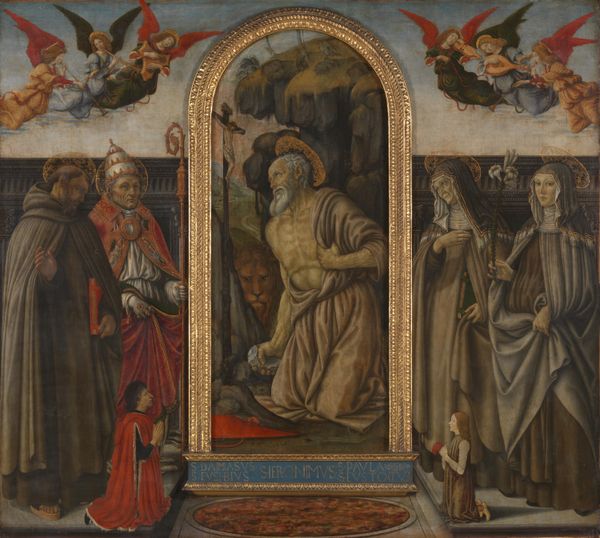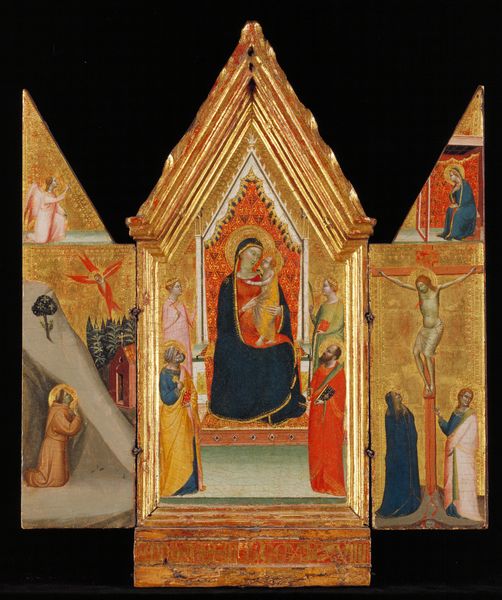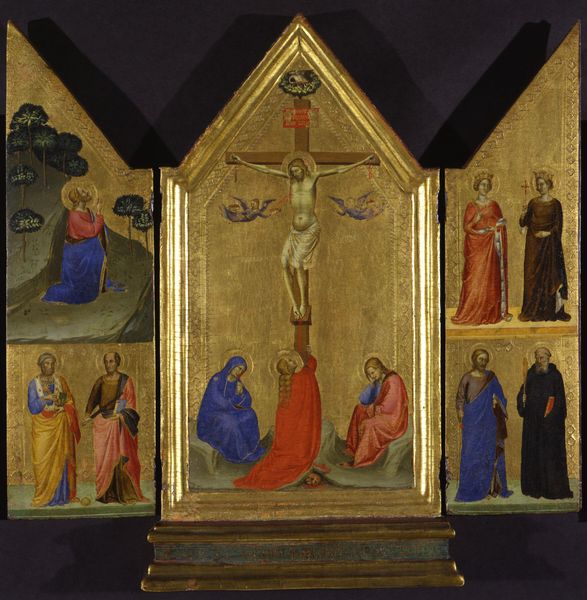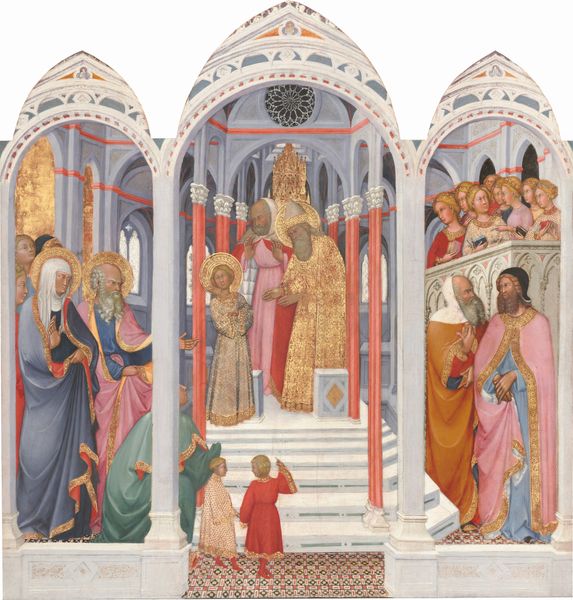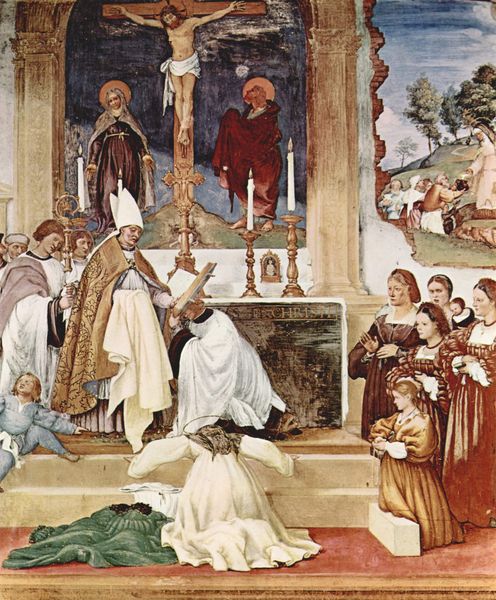
panel, tempera, painting, fresco
#
panel
#
tempera
#
painting
#
sienese-school
#
figuration
#
fresco
#
oil painting
#
jesus-christ
#
child
#
painting art
#
crucifixion
#
history-painting
#
italian-renaissance
Dimensions: 58.8 x 39.1 x 1.7 cm
Copyright: Public Domain
Editor: So, this is Ambrogio Lorenzetti's "The Crucifixion, the Nativity, and Saints," from around 1330 to 1335, made with tempera on panel. It strikes me how these very different scenes, almost like stacked boxes, are put together. How do you see the relationship between the materiality of this painting and its meaning? Curator: I think the material elements are vital. Tempera, panel…these aren't neutral choices. The smooth, almost gem-like surface of tempera allowed for precise detail, think about the labor needed for that golden background, those tiny details on the clothing, or even the figures’ expressions, all suggesting incredible material expense and time. Do you think the expense of the materials influenced its creation or reception? Editor: Definitely. Someone clearly paid for all of it, maybe commissioning it for a particular space. All of those materials must've been traded from a long way away, to end up in the artist's workshop in Sienna! But why juxtapose the Nativity with the Crucifixion in this way? Curator: That's the question, isn't it? The triptych format and expensive materials link the production with status, as much of what we may now label art functioned. The craftsmanship speaks to the work involved, all directed toward reinforcing powerful social structures. Look how both stories relied on laborers for support, in both workshops, religious settings, or just the economy in general. Editor: So the placement of the nativity directly below the crucifixion might even say something about the society's structure back then? One needed the other in their societal view? It does feel a little different to see it this way... Curator: Precisely. Shifting our focus to material conditions really challenges conventional aesthetic judgements, right? It’s about seeing the artwork as embedded in and shaped by economic and social processes. Editor: Absolutely. It reframes how I see the value, both artistic and historical, of the piece. Thanks for illuminating that.
Comments
Join the conversation
Join millions of artists and users on Artera today and experience the ultimate creative platform.
